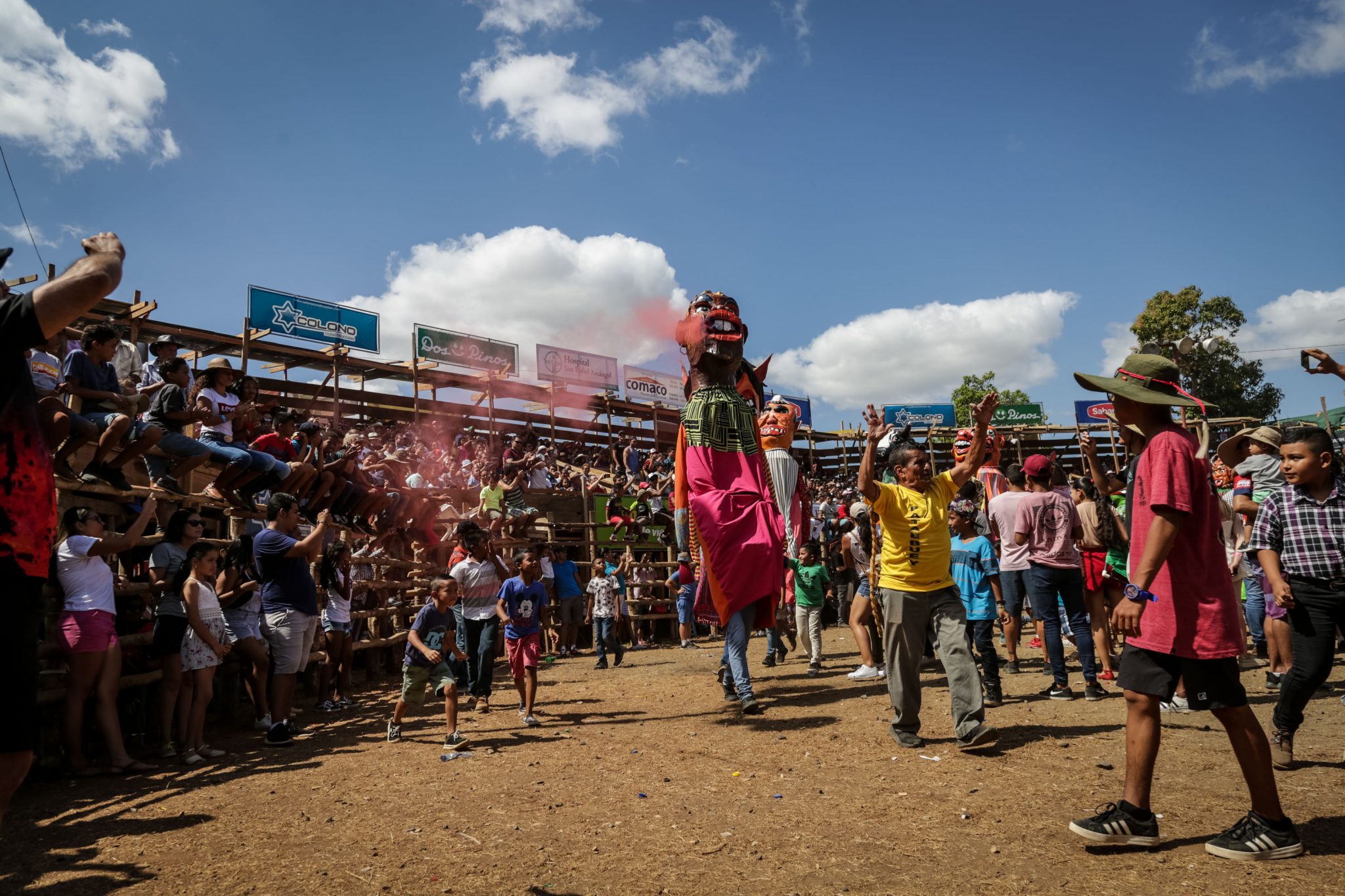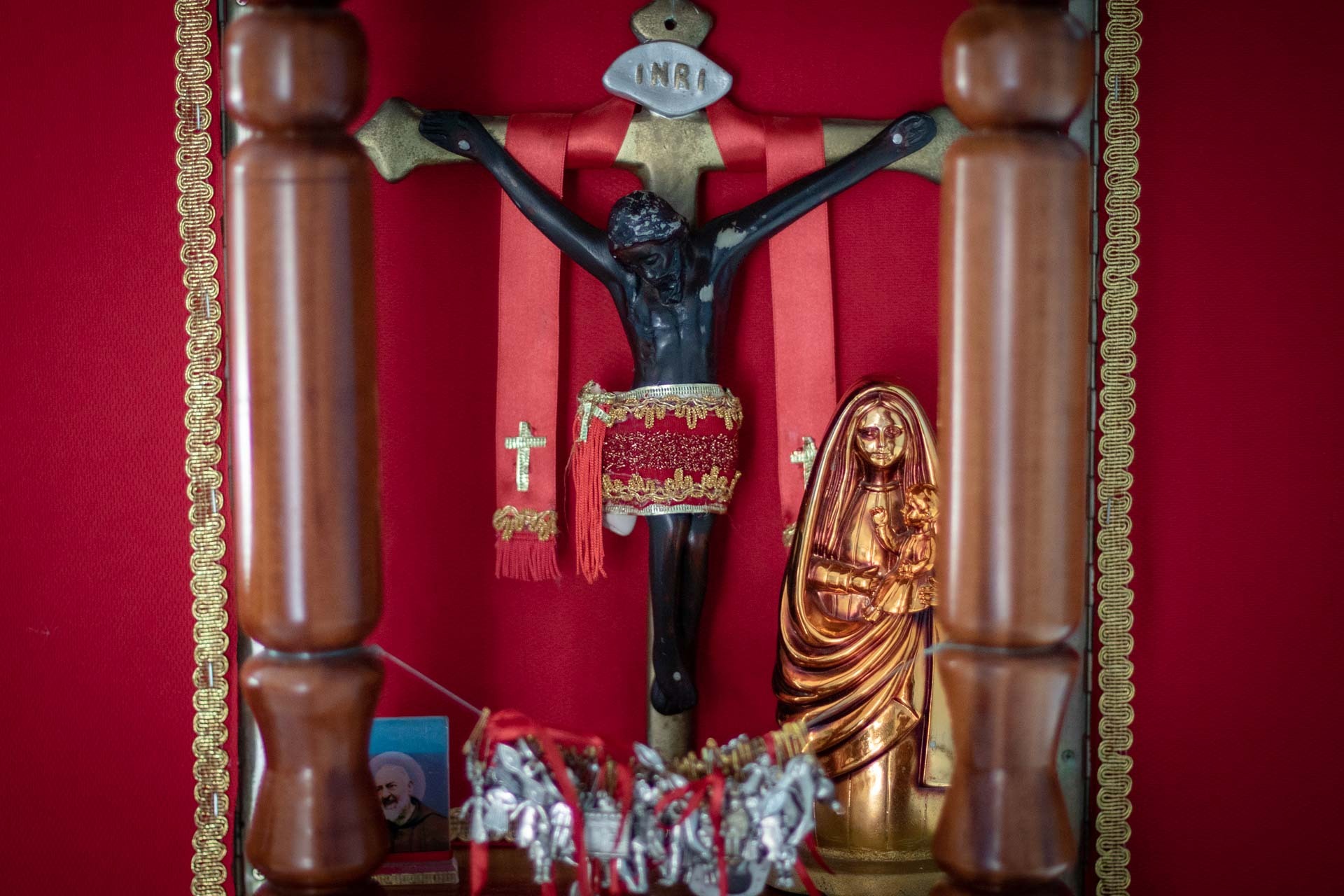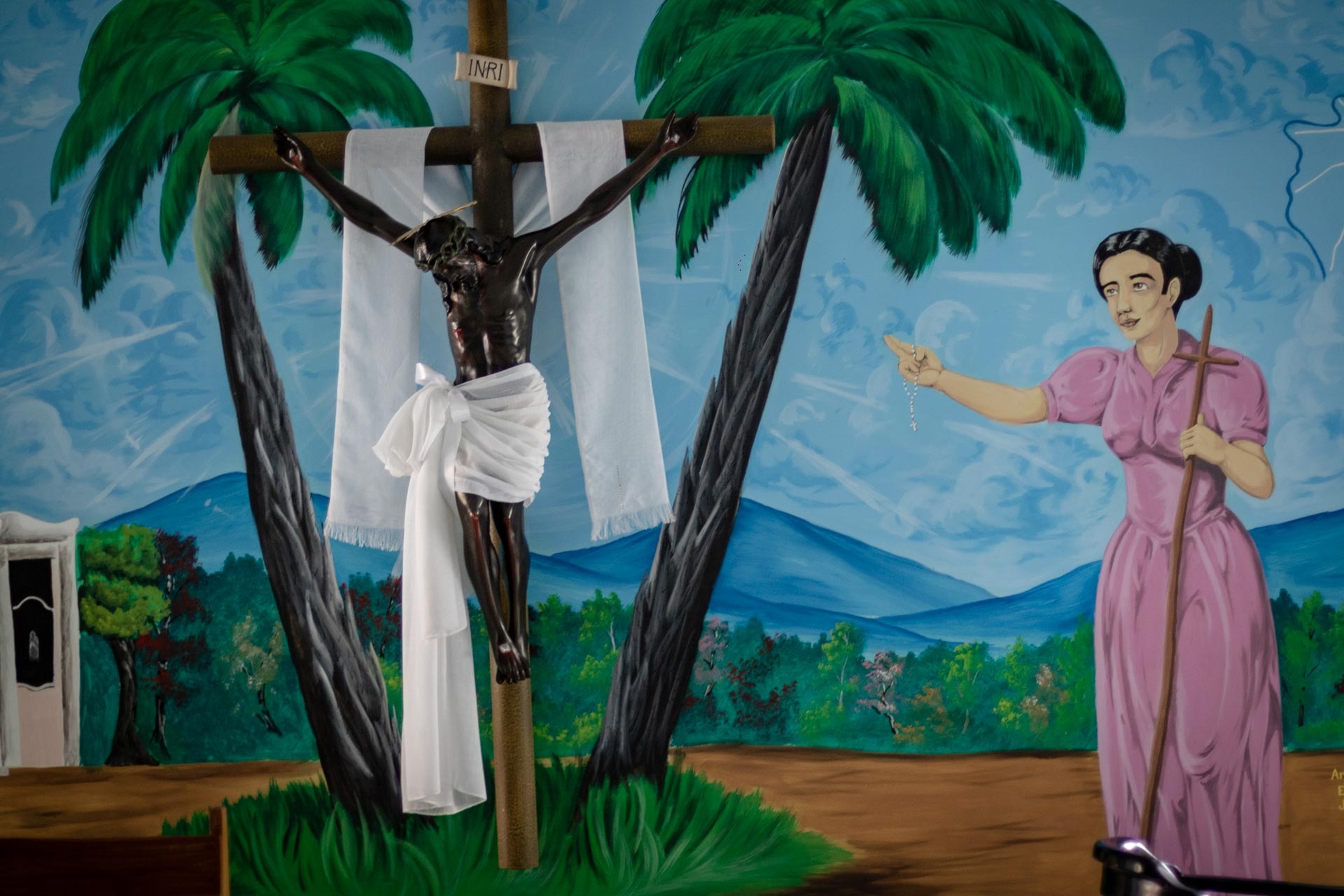
The celebration for the Holy Black Christ of Esquipulas in Santa Cruz was declared Intangible Cultural Heritage of Costa Rica on December 2, 2020.
Today, January 14, the municipal council met with other local authorities to receive and celebrate the declaration, but how did the community obtain it and what does this mean for the tradition?
First, let’s remember what the celebration involves. Every January, between the 14th and the 18th, the local community and visitors gather for the National Typical Fiestas of Santa Cruz. The streets are filled with marimba musicians, masquerades, dances, typical foods, horse riders and folklore. The Los Mangos Park, in the heart of the canton, transforms into the setting for the bull ring and bull riding.
At the same time, the community gathers for activities that honor the Holy Black Christ of Esquipulas such as vigils, processions, songs, music and prayers.
It is a celebration that transcends the religious aspects and enhances the cultural identity of native, Spanish and African groups. The tradition originated more than 200 years ago with Bernabela Ramos, when the figure of Christ was found in the town and she took charge of protecting it.
Every January, we celebrate all that fervor and cultural heritage that has been transmitted from generation to generation. That is what has made it possible to preserve it,” said Santa Cruz folklorist Marlene Contreras, who dresses the Black Christ every January.
How did the declaration come about?
The declaration process initiates when the community that carries on a tradition, in this case that of Santa Cruz with its celebration of the Black Christ, applies to the National Commission for Intangible Cultural Heritage (CONAPACI- Comisión Nacional del Patrimonio Cultural Inmaterial).
It doesn’t happen overnight. It took the community of Santa Cruz two years. The process could be summarized in the following five steps:
- Form: The community completed a form that includes the town’s data and general information about the cultural demonstration, such as the name, a description of the tradition, information on how often it takes place, since when and who participates.
The civic-cultural group in Santa Cruz that led the process was “Apuntalando lo Nuestro” (Supporting What is Ours). For years, the group has organized activities such as cultural weeks, Christmas parades and other folkloric activities and in the last two years, has dedicated itself to working toward the declaration, according to one of its members, Edwin Cabalceta.
Dayana Morales, anthropologist and archaeologist for the Cultural Heritage Center, also explained that during the process, the community detailed “the actions and activities that they carry out to give continuity to practicing the cultural demonstration. If they have a work plan that details the activities they are going to implement, who are responsible, what resources are involved, how the community is organized to carry out the cultural demonstration.”
On the form, they also justified the reasons why they think the celebration should have a declaration.
- Documentary support: As part of the form, the group had to attach documents it deemed necessary to describe and characterize the celebrations to the Black Christ. This makes it easier for CONAPACI to analyze.
According to Cabalceta, they presented 2,000 pages and 10 hours of interviews with cultural exponents that delved into the tradition’s customs.
- Presentation audience: Once the information is received, CONAPACI acknowledges receipt of the application, analyzes the documentation and holds an audience with the community to present the candidacy.
- Visits: CONAPACI also visited the celebration of the Holy Christ of Esquipulas in 2020 and “based on what was analyzed, both at the documentary level and in the community, determined the request’s approval,” said Morales.
- Finally, the commission drafted the decree for Minister Sylvie Duran to approve.

The decree preserves several demonstrations surrounding the celebration such as stewards, knights of the Saint, Promesan Indians, Philharmonic musicians, traditional bands and ensembles, people dressed in masks, dancing clowns and giants, bull riders, bullfighters to distract the bull and protect the riders, lassoing and bull roping, horsemen with traditional implements, ranchers with their best bulls, storytellers, cooks, artisans, collaborators and celebrants. The photograph shows clowns in the ring during the 2019 celebrations. Photo: Cesar Arroyo Castro
Now that they have it, what does it mean?
The declaration, signed by Minister of Culture Sylvie Duran and President Carlos Alvarado, calls on the Santa Cruz community to develop a work plan to preserve the tradition with measures and strategies that promote identification, documentation, research, preservation, protection, promotion, evaluation, transmission and revitalization of the cultural demonstration.
And, on the other hand, it urges public and private institutions to contribute to carrying out the annual celebration and to participate in the work plan.
The Ministry of Culture doesn’t establish an institution and body responsible for leading the work plan, nor does it specify a time period in which they must turn in the plan.
“It must be led by the community that carries on the tradition,” said Morales, from the Cultural Heritage Center. According to her, once organized internally, they should contact the Heritage Center’s Intangible Cultural Heritage Unit to coordinate starting to manage the preservation plan.
“From that point on, an agenda for the process is established,” she said, adding that the Ministry of Culture and Youth gives support through activities and materials that facilitate the development of the preservation plan.
“We were doing it anyway,” commented folklorist Contreras. “But now we local authorities have to be even more responsible.”
Cabalceta, from “Apuntalando lo Nuestro”, indicated that the work should be a joint effort between the town’s organizations, the parish and municipal authorities.
We are going to focus on cultural revival, see how we can work with the municipality and the council members and district representatives so that each of these mobilize people both in the cultural aspect and in the religious aspect,” added Cabalceta.
Contreras said it will also be necessary to strengthen teaching in schools. “We have to make the whole culture around the Holy Christ of Esquipulas known with greater emphasis, because there are young people in educational institutions who don’t know the history: how it got started, who Bernabela Ramos was, why the sanctuary was built there,” he lamented.

According to records, the figure of the Holy Black Christ of Esquipulas of Santa Cruz came from Guatemala in the early 1800s. In 1841, the parish that houses it was founded. The figure is approximately 40 centimeters (about 16 inches) high and 30 centimeters (about 12 inches) wide, according to Edwin Cabalceta, member of “Apuntalando lo Nuestro” (Supporting What is Ours). Photo: Cesar Arroyo Castro
Does the community think it will contribute something else?
Contreras thinks the declaration can also result in economic benefits to the town by attracting national and international visitors to learn about culture and traditions.
Cabaleceta, from “Apuntalando lo nuestro,” agrees with her. “The image of Esquipulas forged the town’s identity,” she said. “For this reason, the decree serves as a shield to preserve both civil and religious traditions. We are going to encourage an economy based on heritage, which dictates that to get to know the town, you have to get to know its heritage.”
What other Costa Rican demonstrations have an Intangible Cultural Heritage declaration?
The country has seven traditions with this declaration. Four of them are from Guanacaste: making Chorotega pottery, the Tope de Toros (bull parade), the festival of the Virgin of Guadalupe and the celebration of the Holy Black Christ of Esquipulas.
The other three are the calypso in Limon, the Swing Criollo (Creole swing) and the Juego de los Diablitos (Game of the Little Devils).




Comments